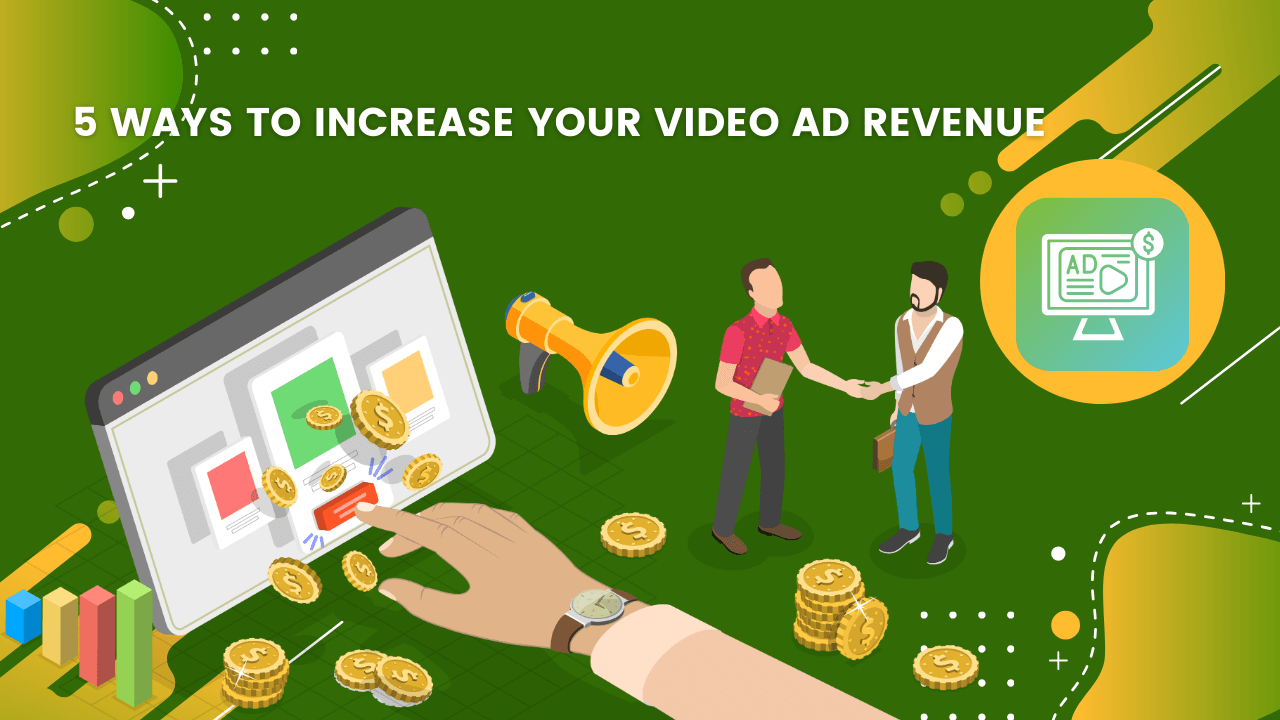Video advertisements have become a potent tool for drawing in viewers and increasing sales in the ever-evolving world of digital advertising. One of the main tools available to publishers to monetise their inventory of video ads is Google Ad Manager (GAM). GAM publishers may reach their advertising objectives and optimize their revenue from video ads by utilizing efficient tactics.
1. Optimize Ad Placements for Seamless User Experience
The placement of video ads plays a crucial role in enhancing user experience and maximizing video ad revenue. Publishers should carefully consider the following factors when positioning video ads:
Non-intrusive placements: It is important to incorporate ads into content without interfering with the user’s experience. Steer clear of advertising that impedes user engagement or obscures the visibility of information. This can entail putting advertisements in the material at organic intervals, like in between paragraphs or sections.
Contextual relevance: The effectiveness of video commercials and viewer engagement can both be raised by matching them with the surrounding material. An advertisement for vacation packages or travel equipment, for example, might be contextually relevant if the film was about a new travel destination.
Mobile-first approach: Given the increasing popularity of mobile devices, ad placements need to be mobile-friendly. Ensure that video ads load quickly and smoothly, adapting to various mobile orientations and taking into consideration smaller screen sizes and touch interactions.
By carefully considering these factors, publishers can strike a balance between maximizing ad revenue and providing a positive user experience.

2. Employ Audience Targeting for Precise Ad Delivery
Publishers may increase income and improve user engagement by targeting specific user segments with highly relevant video advertising through effective audience targeting. Publishers can target advertising based on a variety of criteria thanks to GAM’s audience targeting features, which include:
Demographic targeting: To reach the correct audience with customized messaging, target advertising based on user attributes like age, gender, geography, and language. For instance, young adults who are interested in cars might be the target audience for a video advertisement for a new sports vehicle.
Interest-based targeting: Deliver relevant video advertising that match user preferences and boost engagement by utilizing user interests and online behavior trends. For example, advertisements for vacation packages or trip guides may be shown to a person who has been visiting travel websites.
Device targeting: Ad placements and formats should be customized for particular platforms to provide desktop, mobile, and tablet viewers with the best possible watching experiences. For desktops, longer video advertisements may be more appropriate, but shorter ones may work better on mobile devices.
Publishers are able to target certain user groups with highly relevant video ads that boost engagement and potentially increase revenue by using audience targeting.
3. Leverage Ad Formats for Diversified Revenue Streams
By experimenting with different video ad formats, publishers may maximize income potential while accommodating diverse audience tastes. There are numerous ad styles available from GAM, each with unique advantages and uses:
Pre-roll ads: These advertisements grab viewers’ attention right away by playing before the primary video content. Pre-roll advertisements can result in high CPMs and are useful for launching new goods or services.
Mid-roll ads: These commercials run throughout the program, giving viewers a nice respite and a chance to learn about new goods and services. When positioned carefully, mid-roll advertisements can be beneficial without interfering with the viewing experience.

Post-roll ads: These advertisements play after the video content has finished, giving viewers a chance to interact with the advertisement before moving on. Post-roll advertisements are useful for promoting more content or reiterating brand messaging.
In-stream bumpers: These quick, non-skippable commercials offer a succinct messaging opportunity when they briefly appear within the video content. Call-to-actions or targeted product promotions can be successfully promoted with in-stream bumpers.
Publishers may create a diverse revenue stream by experimenting with various ad types and determining which ones work best for their audience and content.
4. Embrace Header Bidding for Enhanced Ad Competition
Header bidding increases fill rate and may result in higher CPMs (cost-per-mile) for video advertising by bringing in real-time competition between several ad networks. Publishers can use header bidding technology to:
Maximize ad revenue: Publishers may be able to get better bids and increase income by letting numerous ad networks compete for ad impressions. This is due to the fact that header bidding increases the possibility of finding the highest bidder by enabling publishers to simultaneously auction off their ad inventory to many purchasers.
Increase transparency: Publishers have more insight into ad demand and pricing because to header bidding. By comparing the amount that various ad networks are ready to pay for ad impressions, publishers are able to make well-informed judgments regarding pricing and ad placements.
Enhance user experience: By picking the most pertinent advertising from a larger pool of bidders, header bidding can aid in enhancing the quality and relevancy of advertisements. This is so that publishers can select the ad that most closely aligns with the user’s interests and the context of the content thanks to header bidding.
In general, header bidding gives publishers an effective option for raising ad income, improving user experience, and boosting transparency.

5. Measure and Optimize for Continuous Improvement
It is essential to routinely track and evaluate video ad performance indicators in order to pinpoint problem areas and enhance revenue-generating tactics. Google Ad Manager (GAM) offers a full range of reporting capabilities to publishers so they can monitor key performance indicators (KPIs) and learn more about the efficacy of their ads.
Publishers should focus on tracking the following key metrics to assess video ad performance:
Viewability: The percentage of video advertisements that viewers actually saw is known as viewability. Ads that have high viewability rates are successful in reaching their intended audience.
Completion rate: The percentage of users that saw the complete video advertisement is called the completion rate. Ads that have high completion rates are likely interesting and pertinent to the target demographic.
Click-through rate (CTR): The percentage of users who clicked on the video ad is measured by CTR. Ads that have high CTRs are drawing interest and catching attention.
Revenue per Mille (RPM): A video ad’s income per 1,000 impressions is measured by a metric called revenue per mille (RPM). This metric is significant because it allows for the comparison of the efficacy of various ad formats, targeting tactics, and ad units. It also gives an overall assessment of ad performance. High RPMs indicate that publishers are getting a good return on their investment (ROI) from the adverts. An RPM of $2 is thought to be a decent baseline, and this is what publishers should strive for.
Conclusion
Google Ad Manager Publishers have access to a potent new revenue stream and audience engagement tool in the form of video ads. Publishers can optimize their video ad revenue and meet their advertising objectives by utilizing audience targeting, adopting header bidding, embracing a variety of ad formats, and putting strategic ad placements into practice.











